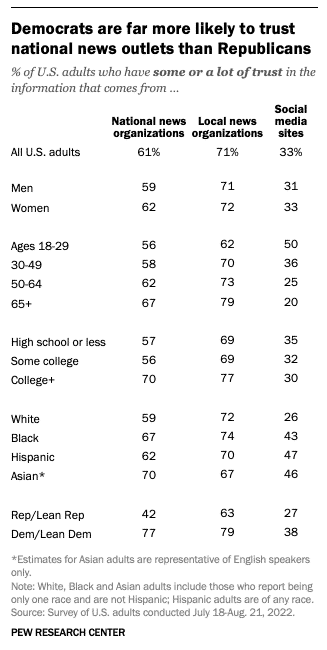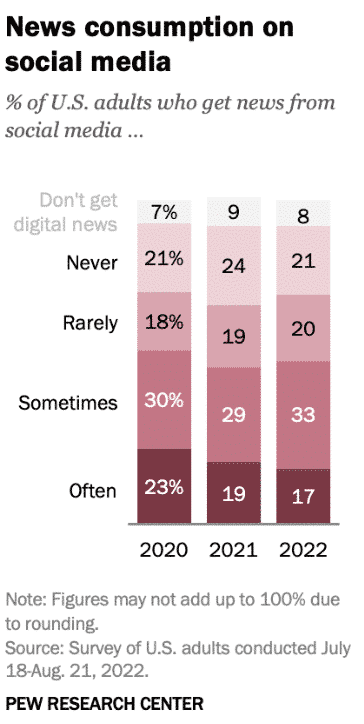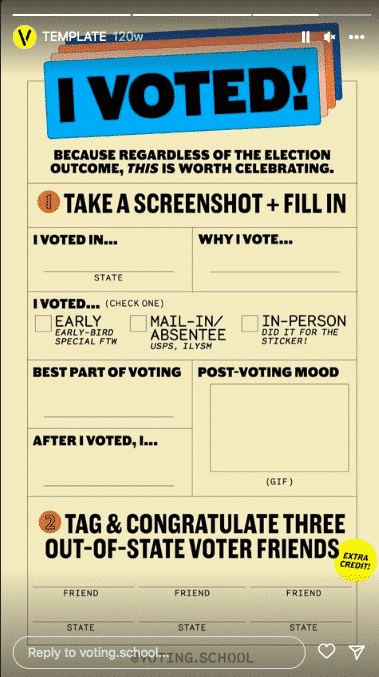Social media and politics have been firmly entwined ever since then-candidate Barack Obama used social networks to launch a grassroots 2008 presidential campaign that engaged voters and donors in ways not seen before in federal politics.
In 2008, Obama had five million social followers spread over 15 social networks. By contrast, today, Alexandria Ocasio-Cortez has 8.6 million followers on Instagram alone. Donald Trump has 87.5 million Twitter followers.
No matter what you think about the role of social media in politics, it’s safe to say that it has become a critical component of political campaigns. Read on for facts, stats, and best practices for using social media in politics.
Social media and politics: Stats and facts
1. U.S. advertisers have spent $3.79 billion on Meta ads about “social issues, elections or politics” since May 2018
That’s as far back as data goes in the Meta Ad Library, which reveals all ad spending in this special advertising category. During that time, there have been nearly 15 million ads in this category.
Source: Meta Ad Library Report
The number-one all-time top spender is Mike Bloomberg 2020 Inc. The campaign spent more than $63 million to promote Mike Bloomberg’s Facebook Page during his presidential bid.
2. American political candidates shared nearly 14,000 Tweets per day in October 2022
That’s based on a Pew Research analysis. It looked at accounts for more than 8,000 candidates at the federal, state, and local level leading up to the midterm elections. In the 10 months leading up to the midterms, they posted nearly 3.4 million Tweets.
3. 38% of Democrats trust social media information, compared to 27% of Republicans
Overall, Americans are increasingly getting their news from social media sites (more on that later). But they still don’t trust the information they find on social to nearly the same degree as they do information sourced from more traditional media organizations.
Source: Pew Research Center
Still, Democrats and those who lean left are much more likely to trust the information they find on social media sites than are their Republican counterparts.
Republicans’ view of the impact of social media on politics and the public opinion in general is also more negative than that of Democrats. For example, 83% of Democrats say social media is an effective tool for raising public awareness about political or social issues. But only 71% of Republicans agree.
4. 23% of U.S. social media users post about political issues
On Twitter, the number is much higher: 45% of U.S. adults say they’ve Tweeted about political or social issues within the last year. And 33% of Twitter content contains some form of political content.
5. 87% of social media users in advanced economies say social has been a good thing for democracy
Overall, people say social media has the greatest positive impact on being informed about current events – both locally and around the world. The greatest perceived negative impact is the potential for misinformation.
Source: Pew Research Center
6. But 64% of Americans say social media has been bad for democracy
The United States is one of only three countries surveyed where the majority of people said social media was bad for democracy. The others were the Netherlands (54%) and France (51%).
Source: Pew Research Center
Social media is a source of news
Americans’ use of social media for news hit a peak during the 2020 lockdowns and has only dipped slightly since. Half of Americans either sometimes or often get their news from social.
Source: Pew Research Center Social Media and News Fact Sheet
Of course, sometimes social media is also the source of political news that ends up in more mainstream media news outlets. For example, from early 2016 until his Twitter and Facebook accounts were blocked in January 2021, it was impossible to avoid news coverage of Donald Trump’s social media posts, even if you never visited a social media site.
Social media can be a place to break news or a place to make news, depending how you use it.
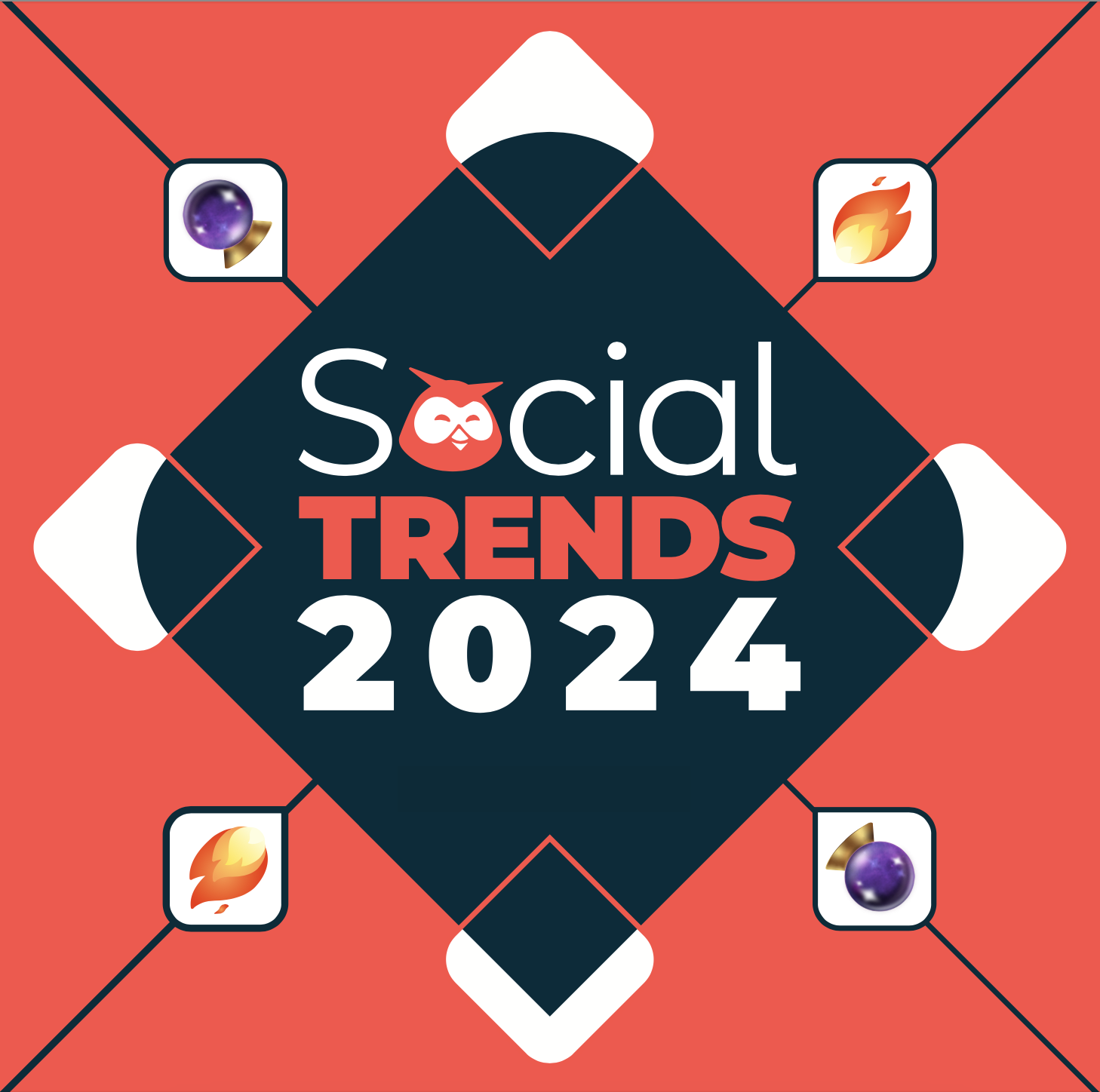
See the latest data and discover the top social media trends specific to government — and craft a strategy that will delight and engage your constituents.
Get the reportSocial media is a platform for political campaigns
Social media is an effective platform for campaigns to get out their message and generate campaign funds.
It’s an especially important tool for getting younger voters excited about the democratic process. 47% of 18-to-29-year-olds in the US. say social media has a positive impact on democracy, compared to only 23% of those over 50. That group of young adults includes new voters eligible to participate in elections for the first time.
Politicians and political campaigns use social media, including social media political ads, to garner attention and support even outside of election cycles. Taking a look at the Meta Ad Library reveals which social media political campaigns are running ads on Facebook and Instagram in real time.
Source: Meta Ad Library
Social media can help increase voter participation
Get out the vote (#GOTV) and voter education campaigns have become a social media staple. Since these campaigns often aim to get more younger people out to vote, social media is a natural platform.
For example, the nonprofit Represent.Us created a social campaign in which celebrities got naked to explain the intricacies of voting by mail (including the potential for disqualified “naked ballots”).
Rock The Vote has been encouraging youth voter participation since 1990. Social media has become a key pillar of their work, and in 2022 they reached more than 12 million people on social media.
And then there’s the dark side…
It’s impossible to talk about the power of social media in politics without acknowledging the ways in which it has gone wrong over the years. Perhaps the best-known example is the Cambridge Analytica scandal. Data from millions of Facebook users was secretly harvested and misused to “micro-target” voters in the 2016 U.S. presidential election.
Twitter was also a source of problematic content and misinformation in the 2016 election, including through content posted by Russian “coordinated influence accounts.”
In response, social platforms bulked up their rules for political content and, especially, social media political ads. Facebook also eliminated certain forms of ad targeting.

Grow on social media while avoiding security and compliance risks. Learn how to connect with your constituents, collect feedback, respond to crises, and more.
Watch nowRules for political ads on Facebook and Instagram
Meta has a specific set of rules for ads that fall within the category of “social issues, elections, or politics.” These include ads for or about political candidates, PACs, elections, voting, social issues, and other political advertising.
These ads must go through an ad authorization process that includes checking government ID and having a residential address in the country in which the ads will run.
Ads in this category must have a disclaimer stating who paid for the ad, accessed through an “About this ad” button.
Source: Facebook
Rules for political ads on Twitter
Rules for Twitter political ads vary by country. In many regions, political ads are not allowed at all.
However, in the United States, political ads are allowed as long as they:
- Do not include false or misleading content
- Comply with disclosure and content laws
U.S. political campaigning ads can only be promoted through Promoted Ads and Follower Ads (other Twitter ad types are off-limits). Advertisers must be based within the United States and must get pre-approval to run political campaign ads.
Rules for political ads on TikTok
TikTok does not allow political ads. It’s important to clarify that includes political branded content – paying creators to post political content is not allowed on the platform.
TikTok bans for government employees and devices
Many governments and government agencies have outright banned TikTok on workplace devices, or even on employees’ personal devices if they are also used for work purposes. This includes at least 25 U.S. states, all U.S. government agencies, the U.S. Senate, the Government of Canada, and the European Commission.
This impacts many political campaigns, especially those run by incumbents – whose staffers are government employees. Before creating a TikTok account, or even downloading the app onto your device, check with your employer to see if you fall under a TikTok ban.
For more details on using social media after being elected, check out our posts on social media and government and social media compliance.
Engage citizens with the only tool that makes it easy to communicate, deliver services, and manage crises.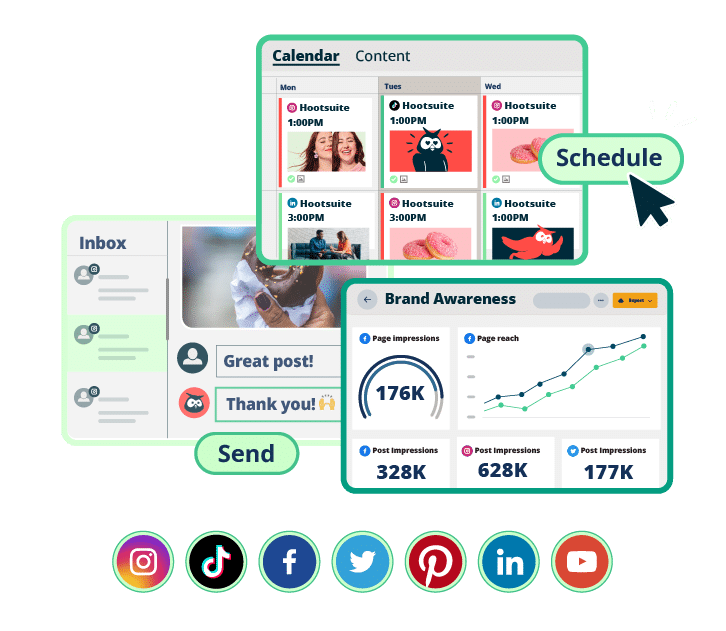
1. Know where your audience is active
Any effective social media campaign begins with audience research. Where is your audience spending most of their time on social media?
This chart from Pew Research is a good place to start. For example, Facebook and YouTube have larger representations of Republican and Republican-leaning voters, while Reddit and Snapchat are preferred by Democrats.
Source: Pew Research Center Social Media and News Fact Sheet
A solid social listening strategy will help you better understand who is already talking about your candidate or social issue online, and which platforms they’re using.
2. Post consistently
It might be tempting to blast your social channels with content in the weeks or months surrounding an election and fall silent afterwards. This could cause followers to tune you out (or even mute you) during your content blitz and forget about you when your account goes dormant.
Instead, create a social media content calendar and posting schedule to spread your content out in a more consistent way. Yes, you’ll likely still be more active leading up to an election, but unless your candidate or cause is gone from public life altogether, posting regularly keeps your followers engaged so they’re there the next time you need them.
Of course, this can be a challenge for grassroots campaigns and candidates with a limited team. Social media scheduling tools like Hootsuite can help make the most of your time by allowing you to bulk upload content and schedule social media posts in advance.
Hootsuite also provides customized recommendations on the best time to post, so you can get the maximum attention for your efforts.
3. Use social media for fundraising
Social channels are an important component of any political fundraising strategy. Try a link to your donation platform in your bio, and create content that explains how donations are used to further your political goals.
You can also use the “Donate Now” call-to-action button in Meta ads to bolster your fundraising campaign.
Source: BC Green Party on Facebook
Note that TikTok is an important exception here. TikTok policies prohibit campaign fundraising in any form. Specific examples TikTok mentions include “a video from a politician asking for donations, or a political party directing people to a donation page on their website.” Politics and money do not mix on TikTok, so keep this in mind when planning your social media political campaign proposal.
4. Post content that’s easy to reshare
Nearly ⅔ of American adults’ political Tweets are in fact retweets, with no additional input from the user. An additional 9% were quote Tweets and 25% were replies. Only 4% were fully original Tweets.
Source: Pew Research Center
Make it easy for people to amplify your message with social content that’s fun or inspiring to share, whether that’s a quirky Tweet:
Roses are red,
Violets are blue.
If every other major country can have paid sick leave for its people,
The United States can, too.— Bernie Sanders (@BernieSanders) February 15, 2023
Or a screencap-sharable Instagram story:
Source: @voting.school
5. To get journalists’ attention, use Twitter
69% of U.S journalists say Twitter is the social media site they use most or second-most for their job. Facebook is next at 52%.
In addition, a recent academic analysis found that politics and the economy was the most common subject area in which news publications used Twitter as a source.
If you’re trying to make or break news on social media, Twitter is the place to be.
6. Use the right tone for each platform
User demographics vary significantly among the social platforms. As a result, it’s important to test your tone and messaging on each platform you plan to use.
For example, research on political social posts leading up to the 2020 U.S. election found that photos of candidates looking happy performed best on Instagram, whereas photos in which the candidates appeared calm fared best on Facebook.
Rather than posting the same content to all your social accounts, use custom cross-posting that tailors your content and messaging to each platform. Put a social media testing plan in place to refine your platform-specific strategy over time.
Save time building a smart presence—and an engaged audience—on social media with Hootsuite. From a single dashboard you can easily:
- Plan, create, and schedule posts to every network
- Track relevant keywords, topics, and accounts
- Stay on top of engagement with a universal inbox
- Get comprehensive performance reports and improve your strategy as needed


